
Have you ever wondered if a solar pile driver machine is only for solar panels? Think again.
Solar pile drivers offer precise ground control—they’re accurate, portable, and can adjust their impact frequency. They’re used in agriculture, telecommunications, disaster response, coastal engineering, and commercial solar projects, often with hydraulic hammers.
Modern machines outperform traditional equipment across various soils and save time on pile installation.
Discover five surprising ways solar pile drivers are used on farmland, in cities, coastal defenses, and other areas, even with piles filled with alternative materials for added customer benefit.
How Solar Pile Driver Machines Work
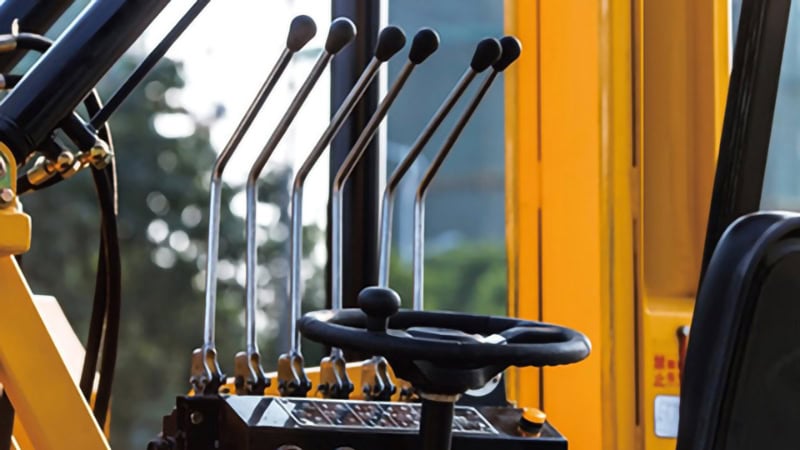
The pile driving machine is engineered to adapt to different terrain complexity, ground conditions, and soil characteristics.
Core Mechanism: The weight of the solar pile driver plays a crucial role in its performance.
- Guided Pile Alignment:
- The main strength of a modern solar pile driver is its guided pile alignment system. Vertical accuracy is under 1° when using laser-guided or GPS-guided systems. Perfect alignment was expected in the first place because even smallest angles can harm solar panels.
- However, this precise ability simplifies things for installers of telecom towers built under strict codes or for farmers setting up automatic equipment.
- Adaptive Driving Modes:What is special about solar pile drivers is how they can operate in two modes.
- Impact Mode: The machine’s vibration waves are high-frequency in Impact Mode, allowing it to pierce tough soil and bedrock. Consider it an accurate tool that knows when it’s done breaking.
- Screw Mode: You can drive screw mode piles into soft or sandy soil without first drilling a hole. Its value has been distinct in coastal and farming areas because the level of saturated soil varies widely across a given plot.
- Modular Attachments: You can quickly change the pile hammer heads when switching between C-channel, helical, sheet piles, and various pile types. With this flexible capability, just one machine can address all types of work without additional equipment.
- Workflow:
- That’s where the technology is at its best.
- Step 1: The vehicle is equipped with a track drive, which can effectively cope with rugged terrain and uneven land, and track shoes can be installed to protect the damage that the tracks may cause to the ground.
- Step 2: The operator then uses the touch screen or remote control to select the depth and angle they want to use and move the equipment, while also being able to set stake points for automated work with simple operations.
- Step 3: The machine automatically adjusts its speed and position during operation to reach the pre-set pile position and drive the pile to a horizontal height.
Why Solar Pile Drivers Work for Non-Solar Projects
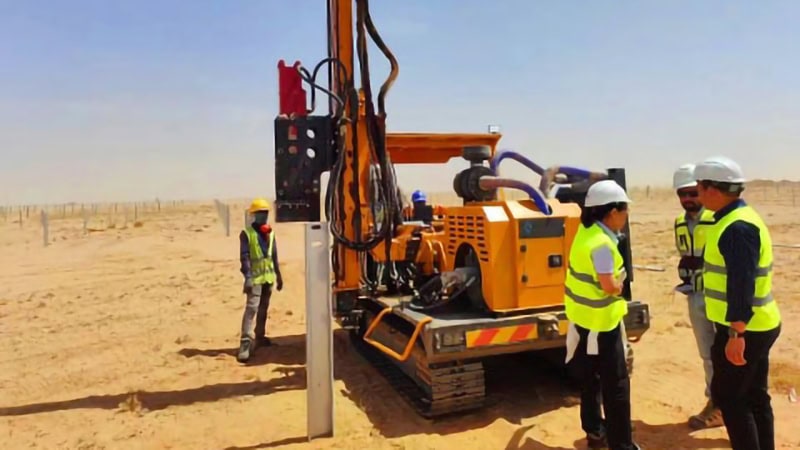
Solar pile drivers’ features, including their use of compressed air and air hammers, as well as other factors, make them better than traditional equipment for many special jobs on the ground due to their weight.
These machines offer faster setup and cleaner operation with less noise than traditional diesel hammers and air hammers. Unlike diesel and air hammers or hydraulic hammers , which often require more frequent maintenance, solar pile drivers reduce long-term operating costs and environmental impact.
- Design Advantages:
- Precision: Keeping that level within 1° is crucial for telecom towers, flood barriers, and foundation building because it’s a critical industry requirement.
- Portability: Solar solutions are regularly placed in areas where space is tight and getting there is not easy. Because they can squeeze between arrays, solar pile drivers make it easy to handle jobs in urban and compact construction areas.
- Shallow-Depth Expertise: Optimized for the 0.5–6m range typical of solar mounting systems, these machines perform well on depths needed for fencing, signage, and erosion control.
- Oil tank maintenance and hydraulic systems in these machines require less frequent servicing than traditional equipment, making them more cost-effective for long-term operations.
- Technical Superiority:
- Faster Setup: Standard pile drivers must be manually calibrated to a suitable degree. But because solar pile drivers have advanced systems, setup only takes up to 30% of the time needed without them.
- Lower Failure Rates: Advanced sensor systems in solar pile drivers help reduce mechanical failures by adjusting set points and alignment in real-time. While the machine doesn’t detect soil changes on its own, it responds to stress or resistance variations during operation—helping prevent misalignment or equipment strain. It’s worth noting that soil conditions are typically assessed by construction teams before pile driving begins, which is why soil detection functions aren’t built into the machine itself.
- Multi-Terrain Mastery: Multi-terrain control: With the advantage of multi-terrain, the solar pile driver can adapt to various environments, and its performance built-in adjustment function enables it to travel safely on rugged ground and uneven land. Due to its versatility, no additional equipment is required for each project, thus reducing costs and maintenance costs.
- Common Challenges and Solutions
- Soft soil conditions: Prevent equipment sink with proper Track Shoes.
- Clay soil: Optimize diesel and air hammers settings for penetration.
- Equipment selection: Consult Everstar Machinery for machine information.
5 Hidden Applications of Solar Pile Driver Machines
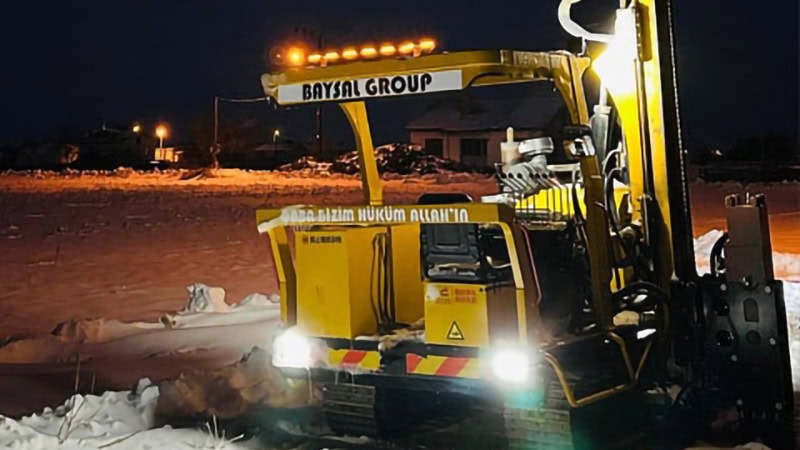
Below are the top 5 hidden applications of Solar Pile driver machines:
Application 1: Agricultural Fencing & Windbreaks
- Challenge: Whenever fence posts go into uneven land, there are special obstacles to deal with. Heavy equipment is no match for clay or rocky soil, and distinctive techniques are also needed for soft spots. Farmers must avoid root damage to essential plants.
- Solution: With Solar Pile Driver technology, operators can precisely drive piles anywhere without disturbing farm assets. The machine specifications allow it to operate in two modes to handle problems in sand and sticky soils without special equipment.
- ROI Case: The Midwest corn operation found they could reduce fencing installation expenses by 40% with the help of their solar pile driver. To avoid paying for temporary repairs and extensions, they handle all fencing improvements internally when their stand isn’t open.
- What is so valuable about it? It does things fast and always in the same way. Scheduling contractors now takes only days, compared with weeks previously, which helps farmers handle land-use changes more quickly.
Application 2: Urban Telecom Tower Anchoring
- Challenge: A problem arises when installing towers for 5G carriers in cities where space is at a premium and stability cannot be compromised. Because the requirements for telecommunication infrastructure are so stringent, even at just 0.5° tilt, standard equipment for installing drive piles can fail to meet those standards.
- Solution: The Solar Pile Driver is equipped with a self-leveling system that ensures vertical precision even on uneven urban surfaces. This technology allows the machine to maintain tilt accuracy within a strict 0.5° margin—meeting the demanding standards required for telecom tower installations. Its compact structure also makes it suitable for confined city environments where traditional piling equipment can’t operate effectively.
- ROI Case: Northeast contractors’ recorded experience clearly shows what gives them an edge. Improved solar pile driving tools allowed the company to work on projects that city authorities had declined due to a lack of space. Purchasing $85,000 in equipment initially brought in an extra $300,000 during the next two years, making the company the top choice for precise telecom jobs.
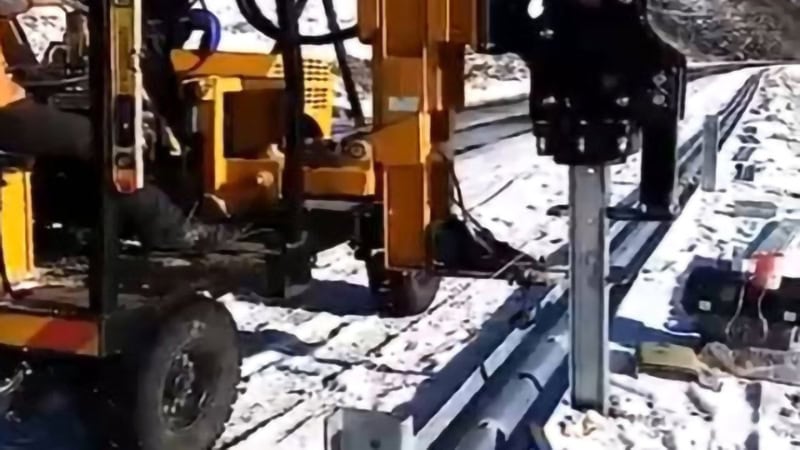
Application 3: Disaster-Resilient Housing Foundations
- Challenge: Because of climate change, many homes along rivers and coastlines must be built to resist flooding. Oftentimes, laying a foundation the traditional way takes up a lot of earth and time, something a disaster can’t allow.
- Solution: In the Solar Pile Driver Solution, short piles quickly support housing and simplify concrete foundation work. These foundations can be rapidly deployed because 200+ piles can be installed daily at the same level of precision.
- ROI Case: A company working on FEMA-approved Gulf Coast housing paid off its machine’s cost within 10 months by responding to disasters. With their improved efficiency, the solar pile driver helped the company finish the foundation work faster than rivals did using standard techniques.
Application 4: Coastal Erosion Control
- Challenge: Coastal construction projects like seawalls, flood control barriers, and erosion protection systems demand equipment that performs reliably in wet, unstable terrain. Traditional pile drivers often face operational issues in such environments, especially near saltwater, where corrosion and ground instability pose serious problems.
- Solution: Solar pile drivers can operate efficiently near waterlines, making them suitable for coastal and flood control piling. Built with corrosion-resistant materials and capable of being mounted on mobile platforms such as trucks, these machines offer the flexibility needed for challenging shoreline installations—without sacrificing precision or durability.
- ROI Case: A coastal engineering firm in Florida saw a clear boost in its project capacity after adopting this equipment. With the ability to install flood control piles in-house, the firm shortened project timelines, improved site control, and eliminated delays caused by equipment failure or subcontractor schedules. This led to faster turnaround and a stronger competitive position in bidding for municipal contracts.
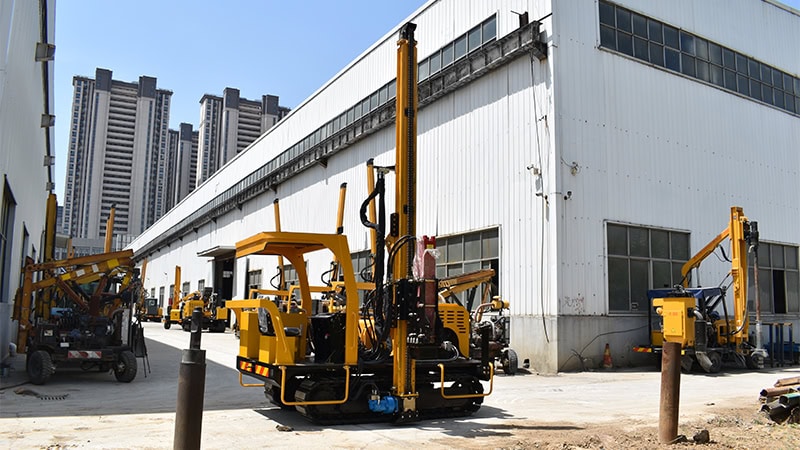
Application 5: Mining Tunnel Reinforcement
- Challenge: Mines below the ground need vents and structural supports in small, hard-to-reach places where pile drivers cannot work. It is both slow and harmful to perform a manual installation.
- Solution: The Solar Pile Driver answers the need for flexible mining. Attachments for different pile types fit precisely in tight spaces. Nearly all installation work is completed 90% faster than manual installation.
- ROI Case: A global mining operation observed a 12-month ROI at three sites using solar pile drivers to reinforce tunnels. Because the route became both speedier and safer, the upgrade looked very desirable.
Cost-Benefit Analysis of Ownership
The financial advantages explain why many industries choose solar pile-driving technology for construction using the right hammer. Costs can be significantly reduced when hydraulic hammers are used, ultimately saving time installing the piles.
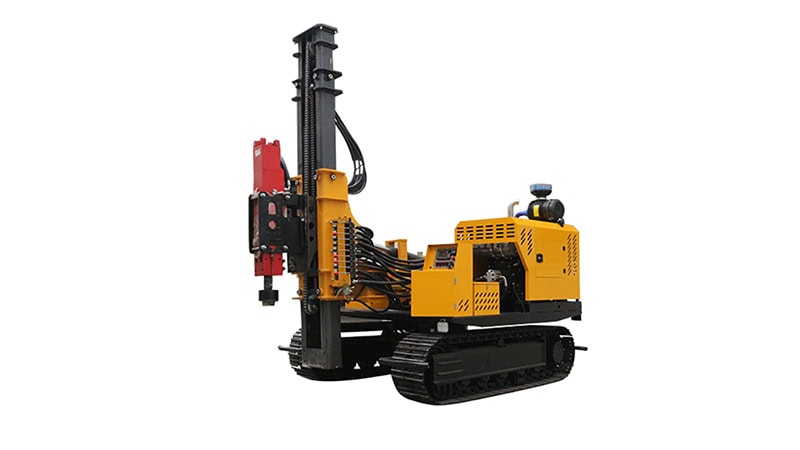
Lifetime Savings:
The long-term financial return goes well beyond the initial purchase price. A standard solar pile driver priced at around $35,000 can generate more than $300,000 in project revenue over its useful life. With a typical depreciation rate of 50% over five years, the retained equipment value remains high compared to many alternatives.
Resale Value:
Even after five years of use, solar pile drivers generally retain about 50% of their original value. This makes ownership a low-risk investment for companies looking to scale without overspending on heavy equipment.
Adaptability:
- Attachment Kits: One pile driver, multiple functions—no extra hardware required.
- Software Integration: Built-in support for diverse industries including telecom, solar, and agriculture.
- Local Support: Everstar dealers provide on-site training, regular maintenance, and compatibility with other Everstar tools—making fleet expansion simple.
How to Choose the Right Machine

Choosing the ideal solar pile driver outside the solar industry means knowing how to use it to effectively drive piles and manage the load with a pile hammer, as well as what key features of several types truly mean in practice.
Key Specs:
- When selecting the right pile driver, ensure you can access detailed machine information and specifications. A single pile driver machine should be evaluated based on your project’s specific requirements to ensure it won’t sink into soft soil conditions during operation.
- You should choose a GNSS receiver with <1° or less vertical directional error. By being so precise, these products are compatible with telecommunications, infrastructure systems, and regular foundation work.
- A pile depth under 6 m is needed to cover most activities outside big construction sites. Check that your standard project requirements are suited to this kind of process.
- Warranty: Choose a pile driver backed by lifetime after-sales service. Reliable support matters—especially for components like hydraulics and sensor systems, which experience the most wear during operation. With ongoing service available, you can count on long-term performance without unexpected downtime.Selecting the right pile driver also ensures that your equipment meets the specific depth and soil requirements of your project.
Conclusion
During this study, it became clear that solar pile drivers are widely used in photovoltaic systems and other energy projects, helping reduce surveying time and improving operational efficiency.
Their versatility also supports applications in agriculture, telecommunications, disaster response, coastal engineering, and adapting to different soil conditions in mining.
Want to see how solar pile driver technology can improve your operations? Everstar Machinery, with 18 years of experience in pile hammer development and production, has completed over 10,000 successful projects worldwide—delivering consistent results and reliable load control.
FAQs
Q: How long does it take to train operators for non-solar uses?
A: Most operators become familiar with the pile driving machine panel in less than three days of training, ensuring their skills are at the same level. Firms commonly offer certified training in running the tools, ensuring that the pile driver work is safe, considering various factors, including pile length, for several applications that people use.
Q: Can solar pile drivers handle heavy clay soil?
A: For clay-heavy ground, piles that are installed using a combination of impact driving and screw-tightening offer stronger stability. When working in challenging soil conditions, the machine’s adjustment functions—specifically for self-leveling and vertical pile alignment—help maintain accuracy and prevent tilt or misplacement. However, please note that data acquisition or soil-based automatic adjustment is not included in the machine’s design.
Q: What’s the average maintenance cost per year?
A: On average, your regular maintenance bill can be between $3,000 and $5,000 for parts and labor, depending on factors such as pile length and type of equipment used. An extended warranty protects your car’s central parts, including the pile head, against high expenses that could cause it to sink into debt, especially if you manage one pile.
Q: Are financing options available?
A: While Everstar Machinery does not provide rental or leasing services, installment payment options are available to support your purchase.、
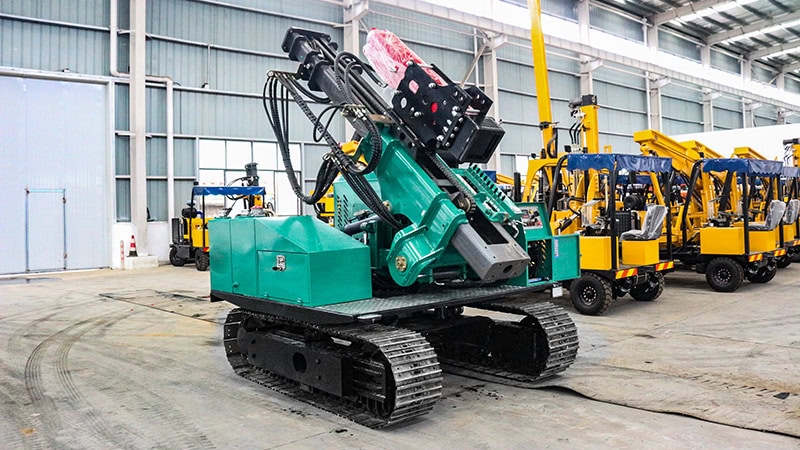
Are you ready to explore more uses for Solar Pile Driver?
With precision-driven performance, hands-on training, and lifetime support, Everstar Machinery ensures your investment performs across a range of applications. Contact us to get the machine parameter PDF or discover how to maximize your results under real-world ground conditions.